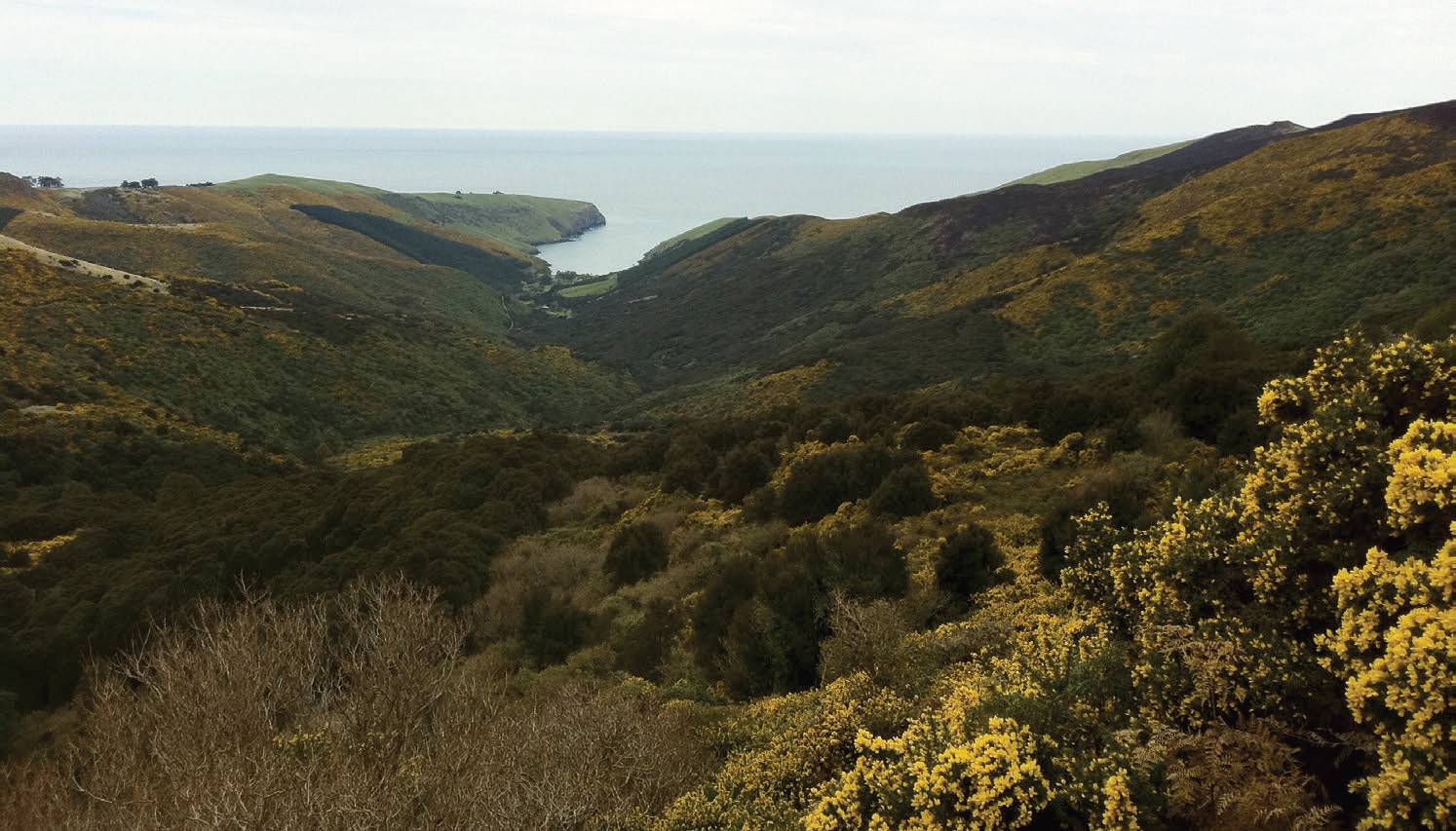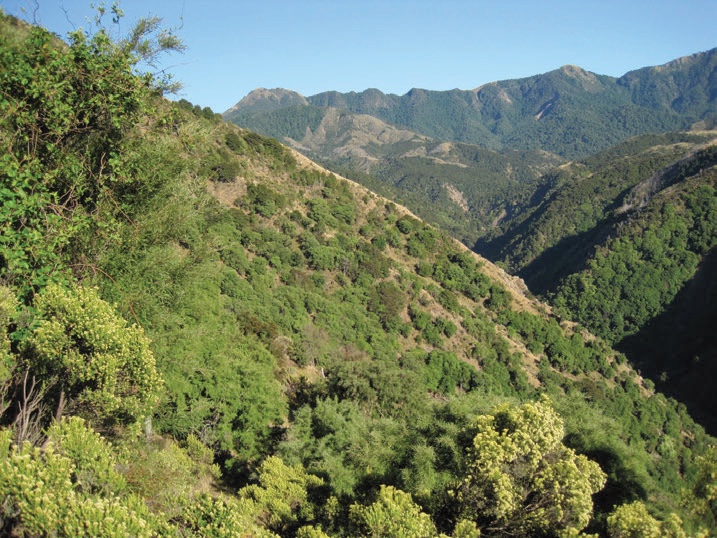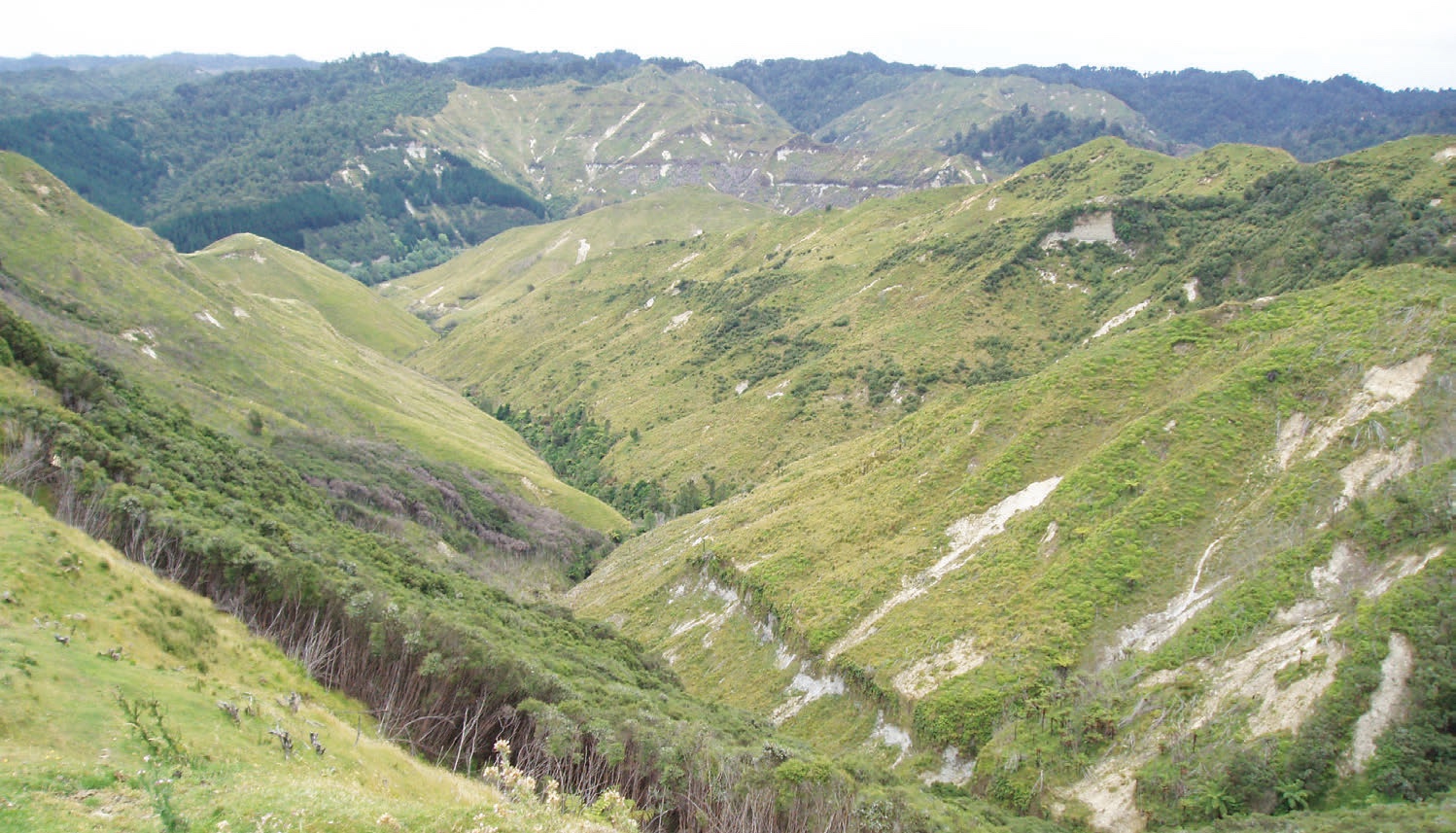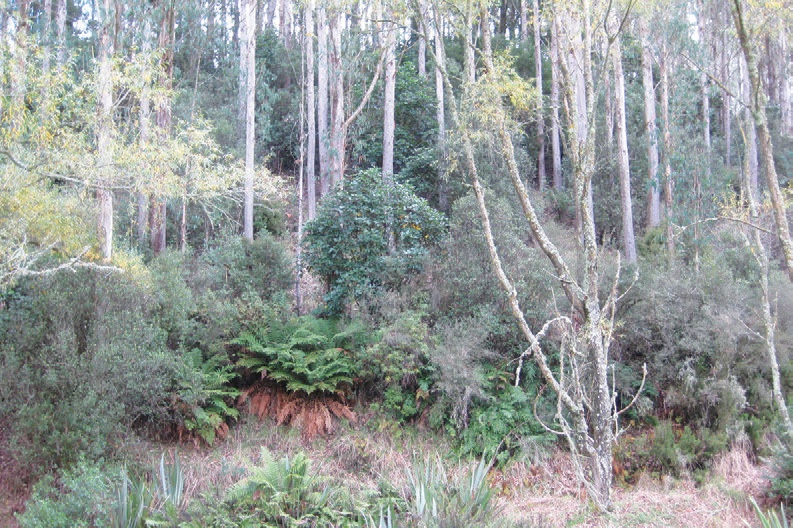Promoting indigenous forest recovery Carbon and the Permanent Forest Sink Initiative
Ollie Belton, New Zealand Tree Grower February 2012.
Over the past few years there has been a lot of publicity about the opportunity to make money by growing trees for carbon sequestration. New Zealand is a pioneer in this respect with its Emissions Trading Scheme, the first such carbon scheme to embrace forestry as a key sector in providing carbon offsets to polluting industries.
Carbon forestry has particular benefits for indigenous forestry because it puts a real monetary value on the environmental services that previously went unrewarded. Native forests provide a wide range of highly valuable ecosystem services such as enhancing biodiversity, improving water quality, and reducing erosion on steep hill country. Yet until the creation of carbon markets there has been little if any commercial value put on preserving New Zealand’s natural forests.
A perfect fit for protection
Young regenerating indigenous forests can be loosely grouped into two categories. One category is forests owned by people who intentionally protect and encourage native forest restoration on their land, such as conservation trusts and private landowners with QE II or Department of Conservation covenants. The other is regenerating land locked in a cycle of clearance to maintain pasture. The ETS now offers a financial incentive to stop the clearance of marginal land that should go back into forest. The carbon sequestration provides income for those conservation minded landowners to finance activities such as fencing and pest control.
Most forest owners will be familiar with the ETS, but few are aware that another government carbon mechanism exists which pre-dates the ETS and is a perfect fit for the protection of recovering indigenous forests. As the name suggests, the Permanent Forest Sink Initiative (PFSI) focuses on long-term maintenance and management of forests for carbon.

In many ways it is similar to the ETS in that it applies to exotic and indigenous forests that have been planted or regenerating since 1989. Carbon credits are issued for increases in forest carbon stocks,and decreases in the carbon stocks, such as from fire damage, must be repaid. However the major difference is that the Permanent Forest Sink Initiative has strict covenants in place protecting the forest for at least 50 years. In effect it is a carbon conservation covenant.
Permanent appeal
This permanence aspect which is lacking in the ETS, has particular appeal to owners of indigenous forest with conservation objectives. A number of native forest restoration trusts have turned to the PFSI, as have some private landowners and local government bodies. The 1,250 hectare Hinewai Reserve on Banks Peninsula is in the process of registering under the scheme, as is the NZ Native Forests Restoration Trust, a charitable organisation with over 30 reserves throughout the country.
Another notable participant is Wellington City Council, which has already registered 250 hectares of the city’s reserve land and is in the process of registering another 1,000 hectares. Environmental groups such as Forest & Bird and Greenpeace view it as an important mechanism to promote permanent restoration of natural forests.
Ironically the ETS has undermined the potential for carbon forestry to encourage protection of vast areas of regenerating hill country, a fact which has not gone unnoticed by some environmental groups. The ETS does not put any restrictions on clearing native vegetation for new forest plantings whereas the PFSI does. Landowners who would have registered young indigenous reversion under the PFSI to earn carbon income can now can register them under the ETS and maintain the right to clear that forest at anytime. It is not uncommon to hear owners of marginal hill country who have chosen the ETS because they want the option to clear regenerating forest if it becomes economic to do so in the future.
Best practice
Environmental reasons aside there may be good economic reasons to pursue the PFSI over the ETS. Not all carbon credits are equal and some carbon buyers may be willing to pay a premium for deserving projects. The PFSI falls into this category with carbon sold into markets not accessible to the ETS within Japan, North America, and Europe. These buyers are particularly attracted to the guaranteed permanence of the forest and that the carbon they buy will be maintained for a minimum period of time. They may also want to know about the individual forest, including photographs. One of the most discerning international buyers, the Danish government, has described the PFSI as a best practice carbon forestry mechanism.
Indigenous forest under the PFSI may have extra appeal to carbon buyers who wish to support natural habitat restoration. It may also help access future carbon markets which exclude certain types of forests such as Australia’s Carbon Farming Initiative. The Australians exclude commercial timber forests from their scheme and only allow certain domestic natural forests to qualify for earning carbon.
PFSI main points
- 50 forests have been or are being registered totalling 13,000 hectares
- 8,000 hectares are indigenous forest and 5,000 hectares planted
- Indigenous forests can earn three to five tonnes of carbon per hectare each year averaged over 50 years
- Costs include measurement if greater than100 hectares and protective management
- Pre-2008 carbon can be sold adding significant additional revenue
- PFSI forests must be maintained for at least 50 years
- Rules are similar to ETS for earning carbon and being liable for lost carbon
- The PFSI covers both indigenous and exotic forests.
Another major economic benefit is that carbon can be sold right back to the start date for PFSI forests. A forest may have started growing in the 1990s but can only be issued carbon credits by the government for carbon stored since 2008 due to the international Kyoto forestry rules. However, some voluntary carbon buyers recognise the carbon stored before 2008 in PFSI registered forests and are willing to purchase it. Payments for 1990 to 2008 carbon can add significant revenues with over 400,000 tonnes of this type of carbon already sold on behalf of PFSI owners.
Slow process
Passive indigenous regeneration can be a slow process. Aided by stopping clearance activities, exclusion of livestock, and control of wild animals, regeneration may only sequester three to five tonnes of carbon annually averaged over the first 50 years.This is compared with up to 40 tonnes a year on average for fast growing exotic eucalypts and radiata.
However the cost of passive reversion is minimal. Establishment costs for planted native forests can be very high at perhaps $20,000 a hectare, and would struggle to make an economic return based on carbon revenue.

Another option for native forest recovery is to plant a fast growing species as a nurse crop to encourage early carbon income. Then by a low thinning intensity encourage an understory of native regeneration. Some PFSI eucalypt forests are being managed in this way because it allows strong early income from carbon and over the longer term provides a low cost transition to native forest.
Several eucalypt species make good nurse crops because they have relatively low canopy densities allowing more rain and light to reach the forest floor than conifer forests of similar stocking. They also produce nectar, and grow tall and smooth barked stems making them more difficult for predators to climb. This provides a safer nesting and feeding habitat for birds, which in turn transport seed from local native plant communities into the planted forest.

A welcome bonus

To date over 8,000 hectares of indigenous forest is either registered under the PFSI or is in the process of registration. The addition of carbon income has been a welcome bonus for many of the participants helping to finance much needed activities. For conservation groups it has provided a boon to help purchase more reverting forest.
A number of pioneering landowners have taken the plunge ahead of their peers. Now after a number of years are proof that protecting and enhancing indigenous forests can be complimentary to farming.
For example, one of our clients who farms a 2,300 hectare sheep and beef station decided back in 2009 to commit 700 hectares of their regenerating land to the PFSI. Today they
are running fewer stock units on the better class land, cutting their expenses and workload, while enjoying significant carbon income from the now protected natural forest. Meanwhile the neighbouring farms are still burning and spraying reversion in never ending and costly battle.
The PFSI was assessed earlier this year as part of the review of the MAF Afforestation Schemes. The report released in August recommended the continuation of the scheme alongside the ETS and retaining its main features on permanence.

 Farm Forestry New Zealand
Farm Forestry New Zealand

